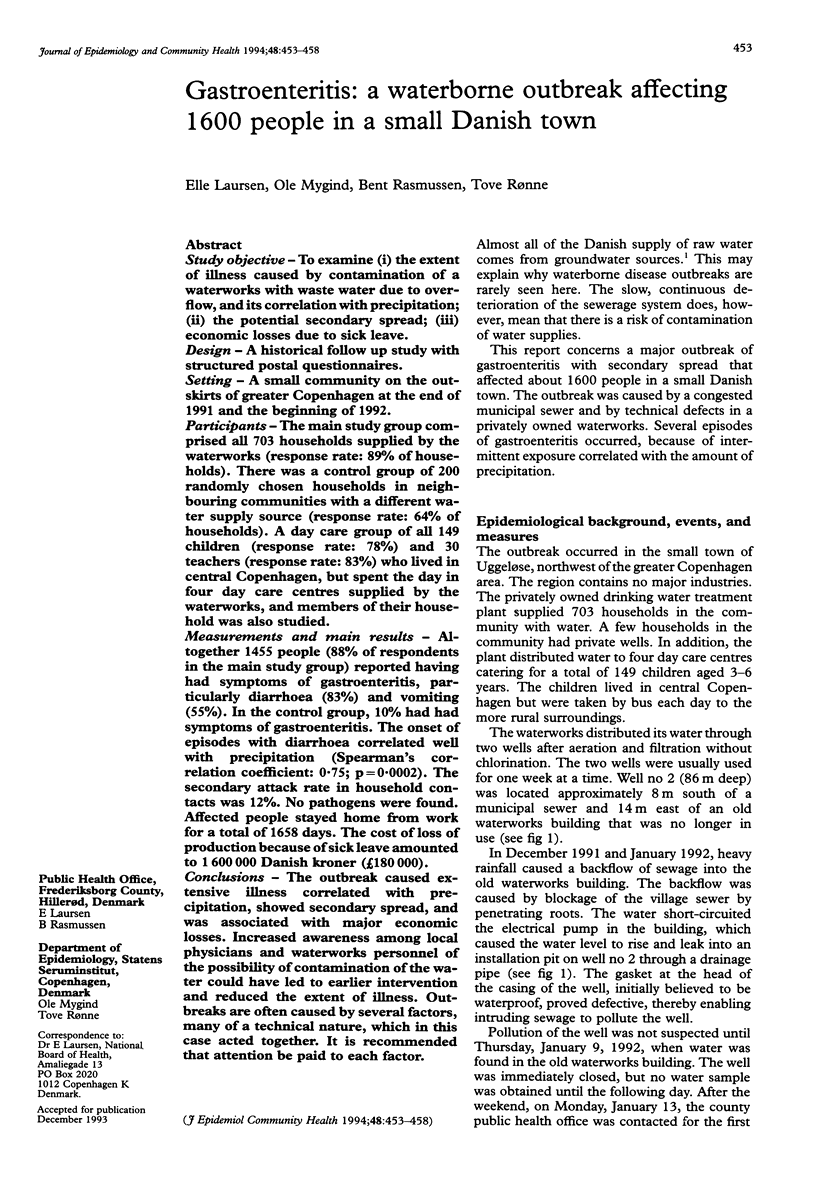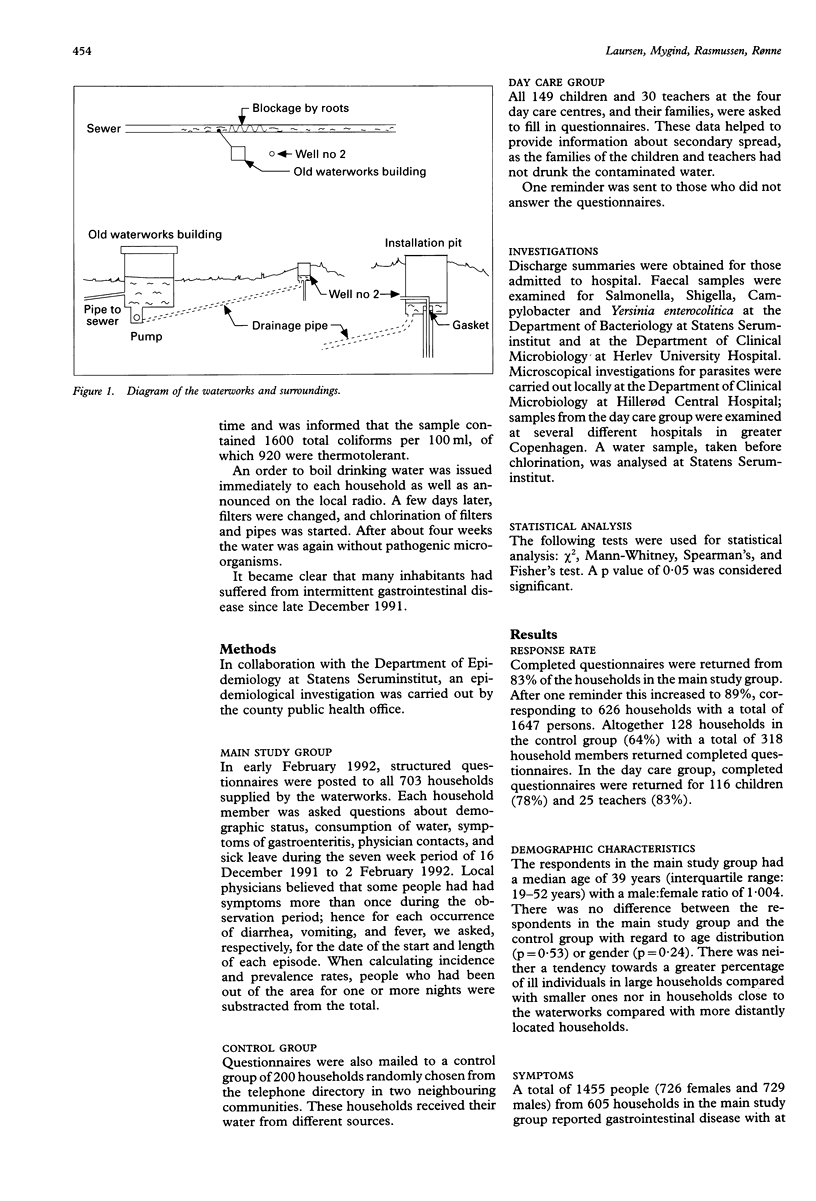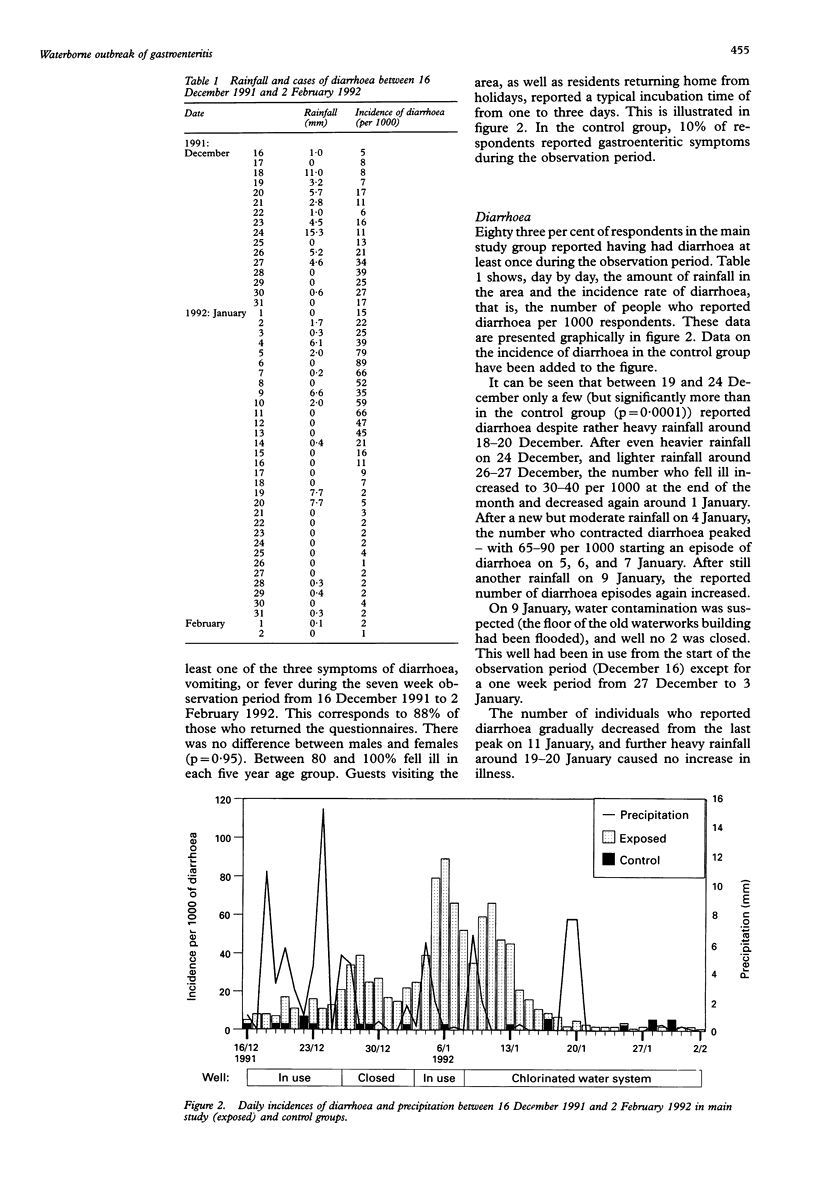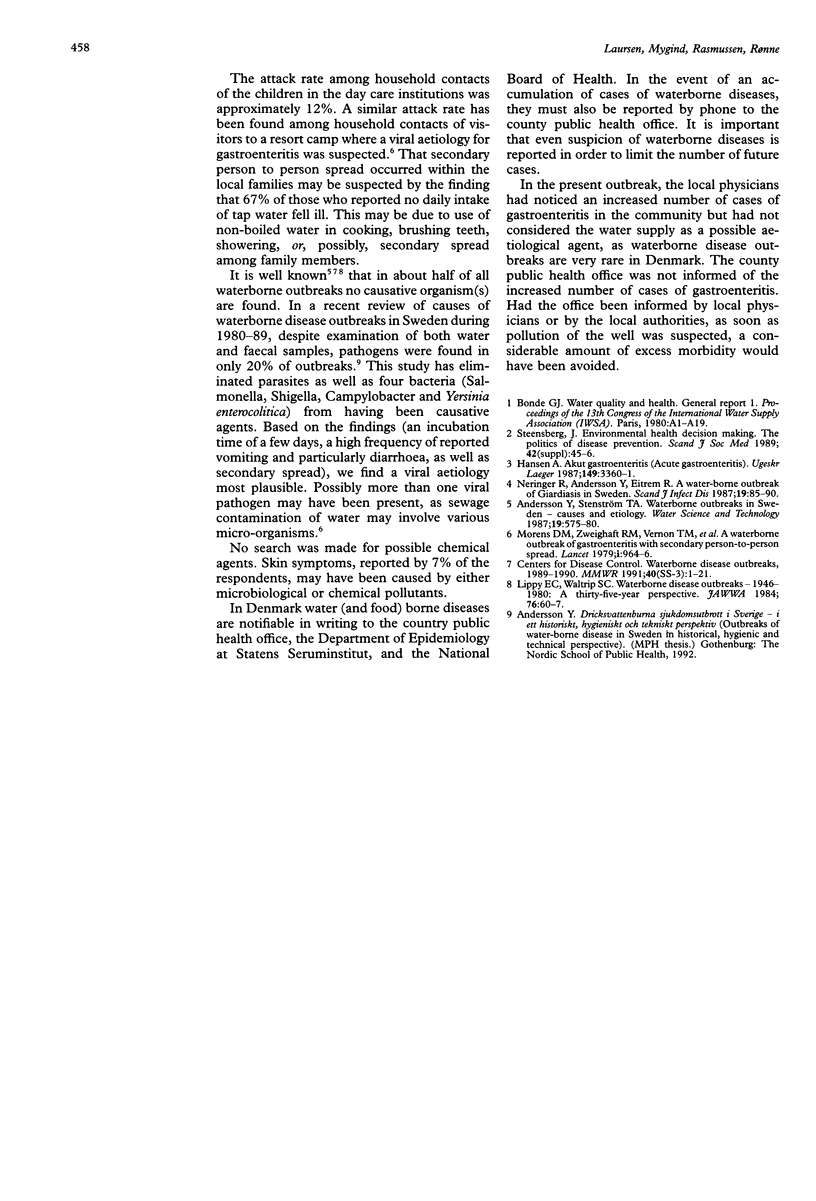Abstract
STUDY OBJECTIVE--To examine (i) the extent of illness caused by contamination of a waterworks with waste water due to overflow, and its correlation with precipitation; (ii) the potential secondary spread; (iii) economic losses due to sick leave. DESIGN--A historical follow up study with structured postal questionnaires. SETTING--A small community on the outskirts of greater Copenhagen at the end of 1991 and the beginning of 1992. PARTICIPANTS--The main study group comprised all 703 households supplied by the waterworks (response rate: 89% of households). There was a control group of 200 randomly chosen households in neighbouring communities with a different water supply source (response rate: 64% of households). A day care group of all 149 children (response rate: 78%) and 30 teachers (response rate: 83%) who lived in central Copenhagen, but spent the day in four day care centres supplied by the waterworks, and members of their household was also studied. MEASUREMENTS AND MAIN RESULTS--Altogether 1455 people (88% of respondents in the main study group) reported having had symptoms of gastroenteritis, particularly diarrhoea (83%) and vomiting (55%). In the control group, 10% had had symptoms of gastroenteritis. The onset of episodes with diarrhoea correlated well with precipitation (Spearman's correlation coefficient: 0.75; p = 0.0002). The secondary attack rate in household contacts was 12%. No pathogens were found. Affected people stayed home from work for a total of 1658 days. The cost of loss of production because of sick leave amounted to 1,600,000 Danish kroner (180,000 pounds). CONCLUSIONS--The outbreak caused extensive illness correlated with precipitation, showed secondary spread, and was associated with major economic losses. Increased awareness among local physicians and waterworks personnel of the possibility of contamination of the water could have led to earlier intervention and reduced the extent of illness. Outbreaks are often caused by several factors, many of a technical nature, which in this case acted together. It is recommended that attention be paid to each factor.
Full text
PDF





Selected References
These references are in PubMed. This may not be the complete list of references from this article.
- Hansen A. Akut gastroenteritis. En epidemi relateret til forurenet drikkevand. Ugeskr Laeger. 1987 Nov 30;149(49):3360–3361. [PubMed] [Google Scholar]
- Morens D. M., Zweighaft R. M., Vernon T. M., Gary G. W., Eslien J. J., Wood B. T., Holman R. C., Dolin R. A waterborne outbreak of gastroenteritis with secondary person-to-person spread. Association with a viral agent. Lancet. 1979 May 5;1(8123):964–966. doi: 10.1016/s0140-6736(79)91734-3. [DOI] [PubMed] [Google Scholar]
- Neringer R., Andersson Y., Eitrem R. A water-borne outbreak of giardiasis in Sweden. Scand J Infect Dis. 1987;19(1):85–90. doi: 10.3109/00365548709032382. [DOI] [PubMed] [Google Scholar]


